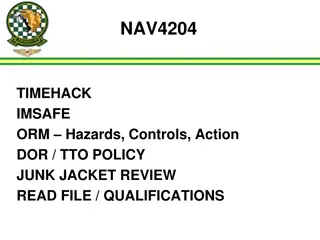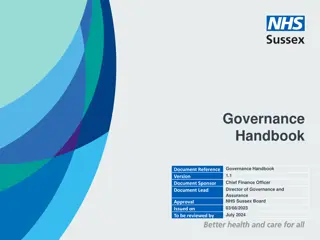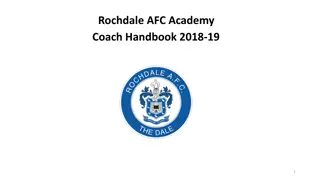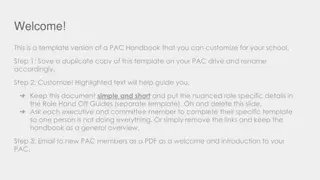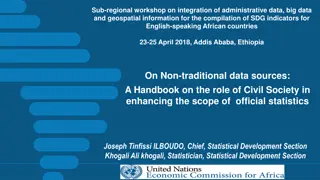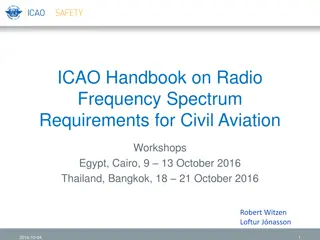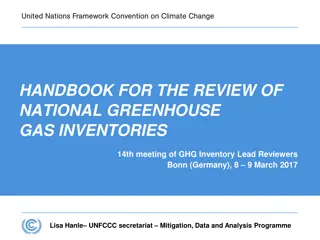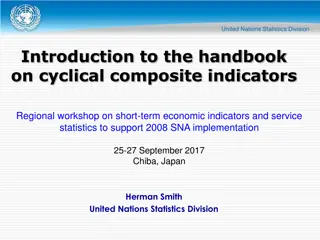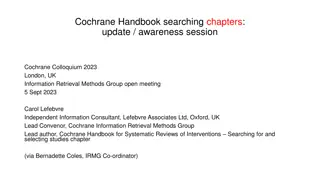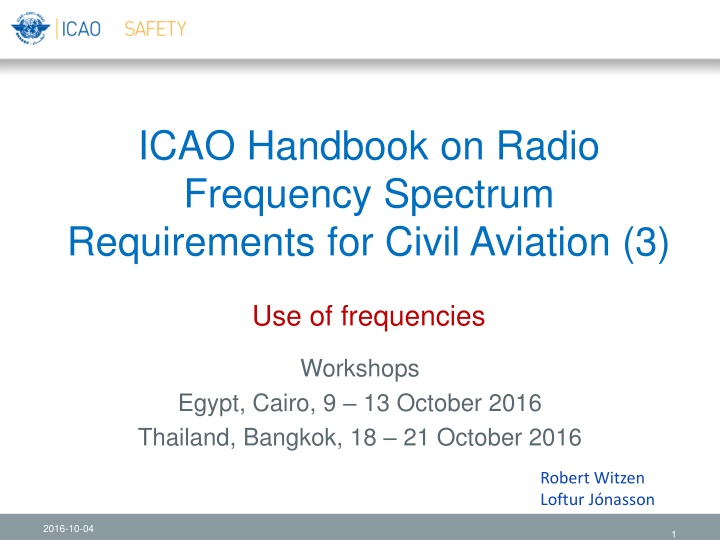
Radio Frequency Spectrum Requirements for Civil Aviation: Use of Frequencies Workshop Insights
Explore the utilization of radio frequencies in civil aviation, including special frequencies, regional frequency allotment plans, and frequency allotment plans for the APAC and MID regions. Learn about the coordination of frequency assignments through ICAO and the importance of protecting against harmful interference.
Download Presentation

Please find below an Image/Link to download the presentation.
The content on the website is provided AS IS for your information and personal use only. It may not be sold, licensed, or shared on other websites without obtaining consent from the author. If you encounter any issues during the download, it is possible that the publisher has removed the file from their server.
You are allowed to download the files provided on this website for personal or commercial use, subject to the condition that they are used lawfully. All files are the property of their respective owners.
The content on the website is provided AS IS for your information and personal use only. It may not be sold, licensed, or shared on other websites without obtaining consent from the author.
E N D
Presentation Transcript
ICAO Handbook on Radio Frequency Spectrum Requirements for Civil Aviation (3) Use of frequencies Workshops Egypt, Cairo, 9 13 October 2016 Thailand, Bangkok, 18 21 October 2016 Robert Witzen Loftur J nasson 2016-10-04 1
Use of frequencies Allotment of frequencies Annex 10 includes an allotment plan for national and for international/national use These allotments are generally not widely observed. In order to achieve international protection from harmful interference ALL frequency assignments in the band 117.975 137 MHz need to be coordinated through ICAO 2016-10-04 2
Use of frequencies Special frequencies Special frequencies identified in Annex 10: 121.500 MHz; aeronautical emergency frequency 123.100 MHz[ auxiliary frequency (SAR) 123.450 MHz: Air-to-air frequency These frequencies, including any appropriate guard band, are not assignable with Frequency Finder but may be entered in the COM list 3 without a compatibility test being required. Registration of assignments on these frequencies with ICAO is not necessary. Some Regions have allotted special frequencies for harmonized use throughout the Region. 2016-10-04 3
Use of frequencies Special frequencies VDL The band 136.500 136.975 MHz is only available for facilities with 25 kHz channel spacing. It is preferred that frequency assignments for VDL will be made in this band It is proposed that on a Regional basis, all Regions allot the band 136.5 136.975 MHz for VDL (VDL Mode 2 and VDL Mode 4) 2016-10-04 4
Use of frequencies Regional Frequency Allotment Plans Each Region has developed a frequency allotment plan where sub-bands in the band 117.975 - 137 MHz have been allotted to specific air-ground communication services Review of the allotment plan may increase the amount of spectrum that can be used for ATC Services Current sub-bands that are not allotted Band that is currently allotted for AOC while protecting any frequency assignment that has already been incorporated in the COM list 3) 2016-10-04 5
Frequency Allotment Plans (APAC and MID) 2016-10-04 6
Use of frequencies Uniform values for DOC A table with uniform values for the DOC of specific Services has been developed and has been in use for many years. E.g. standard DOC for TWR is 25/40 (25 NM, 4000ft) Frequency Finder provides the option to tailor the actual DOC to the minimum DOC that is operationally required. Such use may be more frequency efficient. A review of the uniform values may be considered in particular with regard to the difference between the uniform values used in the EUR Region and in other Regions 2016-10-04 7
Use of frequencies Frequency coordination Frequency coordination takes place between States and the Regional Office. States can submit their frequency requirements to the Regional Office in any format (letter, email etc.) Pre-coordination of new or modified frequency assignments between States is encouraged but not required The relevant Regional Office updates the (global) COM list 3 Inter-regional coordination takes place between the Regional Offices Current coordination methods are not being changed States can submit their requirements with Frequency Finder (export requirements in Excel of FMP format) which facilitates coordination and import in COM list 3 by the Regional Office 2016-10-04 8








